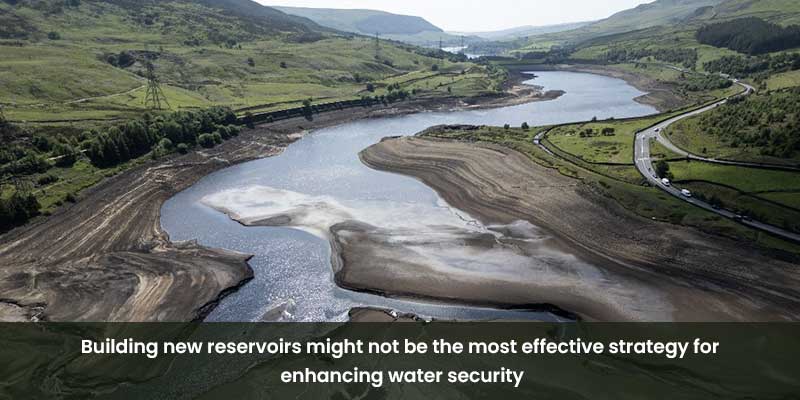- World
- Jun 21
How effective are reservoirs and water transfers?
• The increasing risks and impacts imposed by droughts underscore the urgent need for stronger policy action to build resilience against increasingly dry conditions, protect communities, and ensure the sustainable use of resources in the face of climate change.
• Without decisive policy action, the socio-economic and environmental costs of drought will continue to rise globally, with cascading and potentially irreversible consequences for societies, economies, and ecosystems in all continents.
• In response to the rising frequency of drought episodes, many countries have scaled up the use of emergency measures.
• While these measures can effectively curb water consumption during acute shortages, their limitations are becoming evident as droughts become more frequent and severe.
• Water use restrictions are typically short-term responses aimed at reducing immediate surface water consumption, but they do little to enhance long-term resilience.
• Efficient water resource management is essential for reducing drought risk. As climate change increases the frequency and severity of droughts, measures to reduce and optimise water demand must be coupled with efforts to enhance freshwater availability and diversify water supplies.
• Only by addressing both water demand and supply in an integrated manner, in accordance with local needs and hydrological conditions, can countries effectively prevent, prepare for, and build resilience to drought.
The controversial role of reservoirs and water transfers
• Artificial water reservoirs have historically played a critical role in buffering water scarcity, though their effectiveness under climate change is uncertain.
• Water reservoirs can store water for drinking, industrial, agricultural, and energy production purposes. Less predictable precipitation patterns and higher temperatures may limit the ability of these costly infrastructures to maintain sufficient water storage in the future.
• For example, if a drought similar to that of 1921 were to occur in the Paris metropolitan region, existing reservoirs would recharge to only 28 per cent of their capacity.
• Moreover, depending on their location, local climate conditions, and the type of water withdrawal, artificial reservoirs can reduce the annual flow of rivers by 7-35 per cent, potentially harming downstream ecosystems and water availability.
• Given these challenges, building new reservoirs might not be the most effective strategy for enhancing water security in all drought-prone regions.
• Instead, new reservoir projects should be approached as complementary measures and undergo comprehensive resilience and impact assessments to evaluate their feasibility and long-term effectiveness.
• Equally important is ensuring proper maintenance and retrofitting of existing assets and integrating them with natural water storage solutions to enhance their overall resilience and long-term effectiveness.
• The use of water transfers has also been questioned. Such infrastructures involve diverting water from one basin to another. They have been used in countries like China, Korea, Spain, and the United Kingdom to support agricultural, industrial, and municipal water needs in regions with insufficient water supply.
• While these infrastructures can provide short-term relief, they raise concerns regarding their high construction and maintenance costs, their environmental impacts and climate resilience, and their actual water supply benefits given evaporation during transport and storage.
• In fact, growing water scarcity may undermine the effectiveness of transfers and exacerbate territorial conflict over shared water resources.
• Additionally, these infrastructures themselves risk exerting excessive pressure on the basins they rely on, potentially worsening drought risk. These challenges are exemplified by the Chavimochic water transfer project in Peru.
• While the project has delivered significant socio-economic benefits, including improved well-being and development, its reliance on shrinking glacier resources threatens its long-term sustainability.
• Such cases underscore the need for careful planning and impact assessments when considering large-scale water transfer projects.
Manorama Yearbook app is now available on Google Play Store and iOS App Store

